I had a request to share notes from our book club meeting(s). I don’t know if anyone else is interested or if this is helpful, but here they are.
My sister and I started a monthly parent-child book club called Book Detectives. We invited a few families (enough so it felt like a group, but not so many as to not fit in our space or make discussion cumbersome) to participate. Dads are encouraged to attend, but we only had moms at our first meeting. The kids are ages 5-10. Younger siblings are encouraged to stay home so that we can be focused and they aren’t miserable being still and quiet! (We have about 10 moms and 12 kids plus a couple older sisters and one aunt to help out. We REALLY wish we could have invited several more families!!)
(Disclaimer: My sister, Holly, and I are learning right along with the kids. We don’t have all the answers, much less all the right answers. I can only tell you what questions we asked and what we came up with together.)
I purchased magnifying glasses at the dollar store for each of the kids. The two older sisters dressed up like detectives and handed them out to the kids as they arrived for our first meeting. We also served cookies and little cups of water. The kids sat right in front and the mothers in back, but I think we’ll have the kids sit with their parents and get the moms involved a little more in the discussion next month.
I used the ideas from Chapter 2 of Deconstructing Penguins: Parents, Kids, and the Bond of Reading
We talked about how we needed to be detectives and analyze the suspects’ (characters’) behavior for clues, come up with potential solutions, rule out false leads, and then solve the mystery. I explained that we had to be very careful to stick to hard evidence—it’s against the rules to make stuff up! Our theories had to be supported by the text.
I told the kids that their most important detective tools were listening ears. If they didn’t listen, they wouldn’t be able to solve the mystery! Then I read aloud Anatole by Eve Titus.
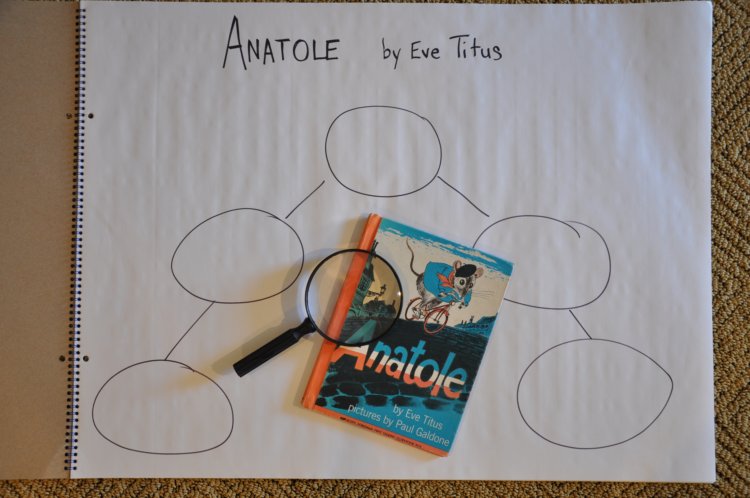
My sister led the book discussion while I wrote our notes on a white board and searched the text when we had questions or to verify evidence. I drew a blank story chart from Teaching the Classics. Holly used the Socratic questions from Teaching the Classics as well as the Story Sequence Chart from Primary Arts of Language Writing (IEW) as a jumping-off place. We introduced the kids to the elements of the story chart one at a time and filled the circles with notes as we went along.
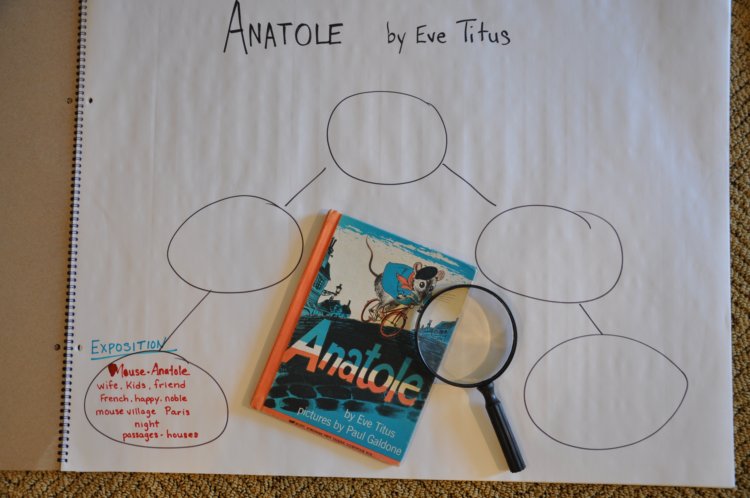
We started with Exposition. Who is in the story? What is he like? What does he say/do? When does it happen? Where does he live? Where does he go? (I wrote on a white board, but I am re-writing and saving all our finished charts in a huge white tablet so that we have them to review and refer to. Please excuse the messy ink blob.)
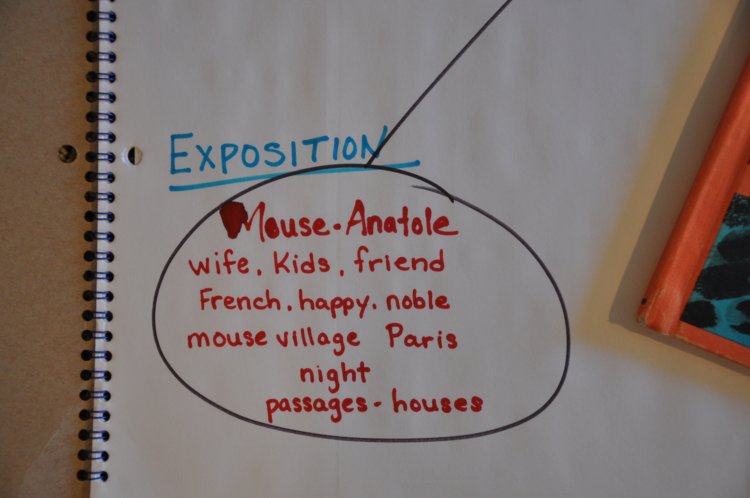
Then we talked about Rising Conflict. What is the problem or surprise? What do they need or want?
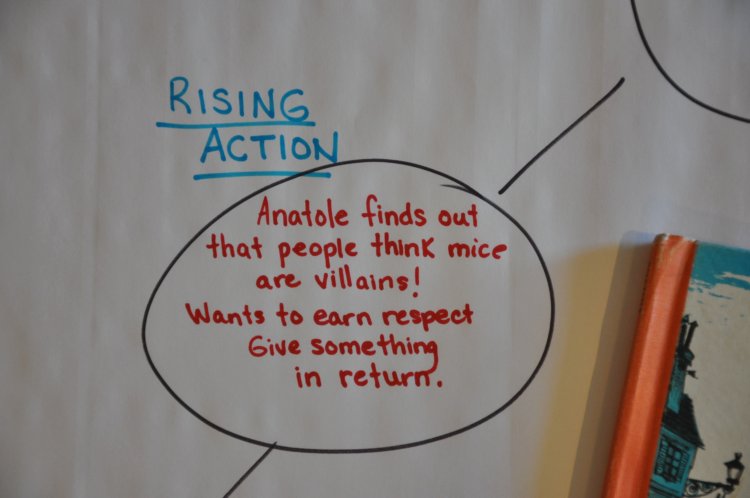
Next up was Climax. At what point do we first know the problem will be resolved? How is the problem solved?
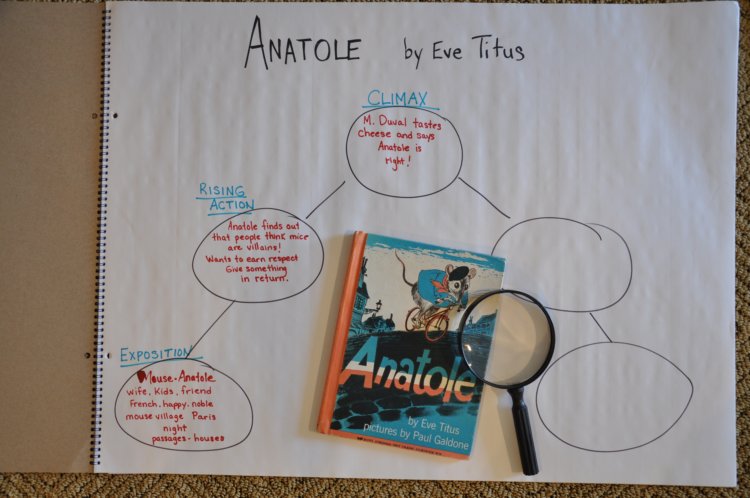
Then Denouement. We had fun with that word. It was a French sort of evening with genre, a mouse village in Paris, and denouement. (It sounds a little like day-new-mah (with a nasally sort of mah).) What happens after the problem is solved? What loose ends are tied up?
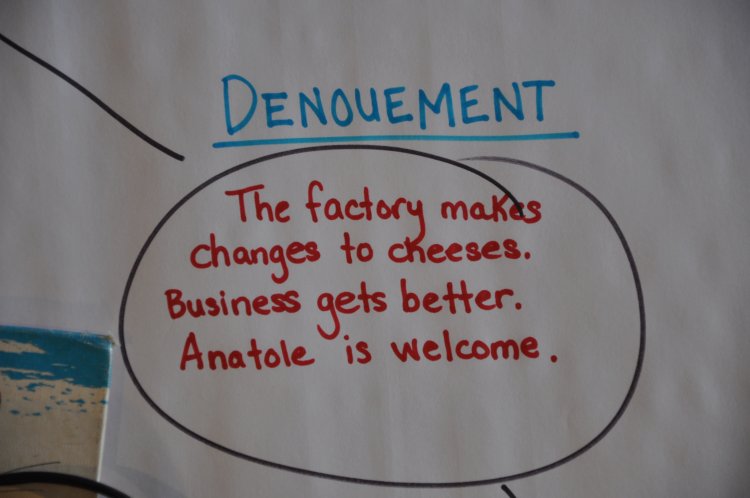
Then Conclusion. What is the result? What is learned?
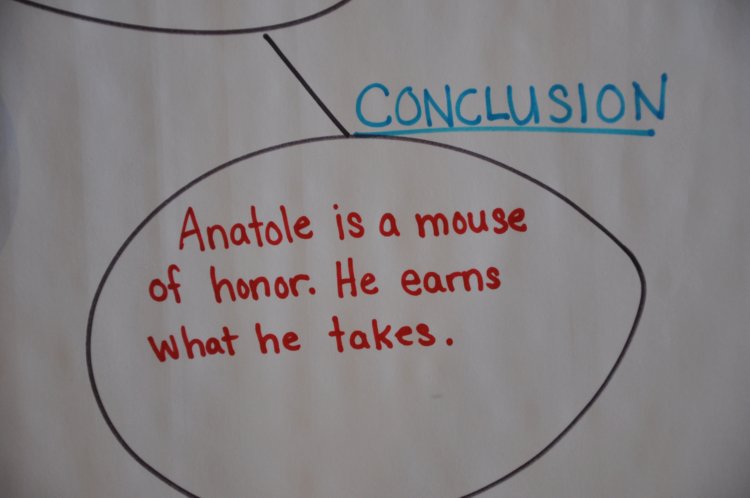
We finished up with Theme. This is the hidden mystery, what the author is really trying to say. What is the universal idea that we can take away from this story?

At future meetings we will explore protagonist and antagonist, conflict (man v. man, man v. fate, man v. society, man v. self, etc.), context and authorship, and literary structure and style. But we’re taking this s.l.o.w.l.y. and trying to keep the kids engaged!
Our meeting took about an hour, which was our estimated ballpark. Holly and I talked about thinking of something to give the kids a break or change of pace somewhere in the middle of the meeting, but we haven’t come up with specific ideas, yet. And that’s about it!

6 comments:
Thanks for the post! I read DP a few months ago. Nice to see it put into action and get a few ideas.
Maybe some year for the kids...we are just getting an ecumenical book group going for the adults!
Thank you Heidi! I loved reading about this!
THanks, Heidi!
This is GREAT!
Julie in ST. Louis
Please keep posting each month on this. I love reading about how it was led. Thanks so much!
Thank you so very much for sharing this. I absolutely LOVE this idea! I've just finished the book Deconstructing Penguins and am ready to start our own little book detective group.
Thank you!
RMann
ryashiki@hotmail.com
This is great, Heidi! I found this post through a google search about DP (which is in my Amazon cart) and then to WTM and this post. Small world. :) I can't wait to read the book with H, I think he'll love being a book detective.
Cori
Post a Comment